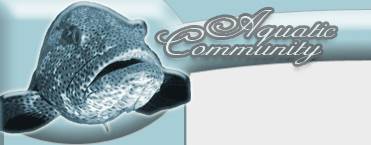Pet Raccoons
Pet raccoon information
The racoon, sometimes simply referred to as coon, is an active and demanding pet that can be a highly rewarding companion if you have enough time to keep it busy. There are several species of racoons but the species most commonly kept as a pet is Procyon lotor, the Common or Ring-tailed raccoon. The species is also known as North American raccoon and Northern raccoon. Procyon lotor is native to North America but can today be found in Europe, Japan and the Caucasus as well. They are very adaptable animals and have become a common sight in many suburban and even urban areas. Racoons are often seen as pests since they have a habit of rummaging through garbage.
Racoons have a very characteristic look, with their emblematic facial mask and striped tail. They have very sensitive paws that they use to find food by feeling their way to it. They are opportunistic omnivores that will eat just about anything they can find. A large part of the diet of wild raccoons usually consists of invertebrates (almost 50%), other common food sources are plant matter and small vertebrates. They sometime "wash" their food in a nearby body of water before eating it and this habit is believed to mimic their natural foraging at the water’s edge.
Raccoons grow to be around 40-70 cm (16–28 in) in length and weight between 4 and 9.0 kg (8.5 and 20 lbs).
Related females often share a common area and unrelated males sometimes live together. It is believed that this behaviour makes it easier for them to protect their territory. Territory sizes vary and can be anywhere from 0.03 km² for females in cities to 50 km² for males on the prairies.
May states have rules regarding the keeping of raccoons and some require a license. Make sure that you meet all rules before getting one.
Pet raccoon taxonomy
Kingdom: Animalia
Phylum: Chordata
Class: Mammalia
Order: Carnivora
Family: Procyonidae
Genus: Procyon
Species: Procyon lotor
Pet raccoon care
Raccoons are easy to care for and can be kept in a fashion similar to cats and dogs. They love running around exploring. This behaviour can bring you a lot of fun but it also means that raccoons are very demanding pets as they need constant supervision. Make sure to child proof all doors and latches. They can be kept indoors or in outdoors cages (at least 120 x 120 cm / 4 x 4 feet) and can easily be trained to use a litter box. A racoon kept in a cage should ideally be allowed out to play and investigate on a daily basis. It is important to provide Raccoons with a lot of water (if possible running water). They should have access to enough water to clean their food before they eat it. Racoons become very tame and are sometimes compared to monkeys. Despite this, experts often discourage keeping raccoons because they are wild animals and can be unpredictable. They can also become more aggressive than normal during the mating season.
Pet raccoon feeding
Raccoons are omnivorous and are very easy to feed. They can be fed a variety of different commercial foods available on the market designed for cats and/or ferrets. They will prefer a varied diet with some special treats every now and then. Including items such as invertebrates, fish, eggs and vegetables in the daily diet will help keep your raccoon happy. Including such food items will also help making their diet more natural. Raccoons can develop the habit of begging at the table. We don't recommend encouraging this behavior but if you do you should avoid giving them spicy or salt food.
Baby raccoons can be raised on formula. Make sure not to give them too much food as baby raccoons will overfeed which can cause pain and even death.
Pet raccoon breeding
The raccoon breeding season lasts from late winter to the early spring. The female gives birth to a litter of 3-4 young (most commonly) after a gestation period of 65 days. This means that the young ones are usually born in April, May or June. The female gives births in a nest/den and the young stay there for about 7 weeks after which they start to explore their environment. At this point the mother starts moving the young between temporary dens. The pups leave their mother in late fall.
Pet raccoon Facts
Pet raccoon fact 1
The name raccoon is derived from the Native Amrican word ahrah-koon-em which literally meansmeaning “[the] one who rubs, scrubs and scratches with its hands" The word was introduced to European settlers by Chief Powhatan and Pocahontas.
Pet raccoon fact 2
The European city of Kassel has the densest population of raccoons in Europe with about 50 to 150 animals per square kilometer (129–388 animals per square mile). They can be found in similar numbers in certain U.S. urban areas.
Pet raccoon fact 3
The raccoon is primarily hunted and farmed for it skin, but is used as food in certain areas of southern USA. Raccoons were once a food source for many Native American groups.
Pet raccoon lifespan
Raccoons generally live for 10-12 years although they can get as old as 16 years. The average lifespan of a raccoon in the wild is only 2-3 years.
